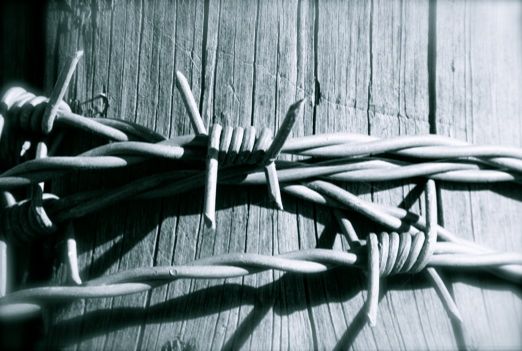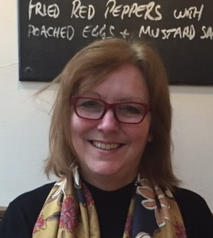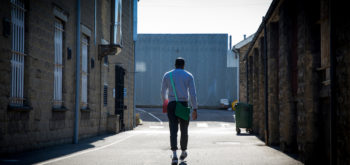 Understatement of the week: October is a busy month in the world of academia. Before we even start to engage with our students in the teaching and learning process, they have to be enrolled, welcomed, inducted and expectation-managed. And, of course, they need to be trained to take part in our real-client schemes. So how and when do we do this?
Understatement of the week: October is a busy month in the world of academia. Before we even start to engage with our students in the teaching and learning process, they have to be enrolled, welcomed, inducted and expectation-managed. And, of course, they need to be trained to take part in our real-client schemes. So how and when do we do this?
To set the context on numbers and logistics, we are a large law school in UK terms. In addition to our 321 new first year students who are not eligible to take part in our pro bono schemes or our Innocence Project, we have a further 1,300 (or thereabouts) students on our various programmes: a mix of undergraduates, postgraduates and the professional courses for solicitor and barrister qualification. Cardiff is a ‘Russell Group’ university, so we are more traditionally known for our research focus rather than our Law in the real world activities, but this is changing as legal education evolves and as employability drivers take hold.
Pro bono opportunities are CV gold-dust for law students. Research in 2012 (Career Expectations of Students on Qualifying Law Degrees in England and Wales, by Hardee Consulting) suggests that 79.1% of all students embarking upon a law degree do so because they want to enter the legal profession. Real client work is important to that group.
Not all of our eligible students want to take part: many work full or part-time, and have no spare capacity. Still, sometimes I think my job description should be Juggler and Manager of Expectations: demand exceeds supply and we have to decide how we select and train students. How much importance should we attach to past academic performance? Should we reward strong students who are more likely to produce high quality work, or should we seek to enhance the CVs of the more average students? The National Student Survey means that students need to be satisfied and our university employers want high scores from students.
How should we deal with students who may see themselves as consumers of an expensive product, expecting CV-enhancement without any real commitment to our social justice activities? Should our schemes be part of students’ degree studies? Many universities do this, but ours are still all voluntary and extra-curricular.
Over the eight years that we have been operating our clinics, including our innocence project, we have reached a workable compromise. We allow all eligible students to attend two training events, including our innocence project, if they want. In that way, they can get a flavour of a new area of law and practice that they won’t encounter in their degree studies, without committing to casework. We regularly agonise over what we should include compared to what we can realistically cover: “comprehensive” is replaced by “compromise”.
Last year, we had 90 students on our innocence project. As an extra-curricular project that is not core-funded as regards teaching staff, that is not sustainable. This year, after much deliberation, our training is significantly more demanding. Stage 1 (all eligible students welcomed; 115 came) was a full Saturday, plus one other evening. Stage 2 is six weekly evening practical sessions and requires a portfolio to be produced. We have 80 students on board for this stage, but expect (unscientifically) that half of them will give up. Forty new students joining our 15 returners is arguably still too many.
Content of training
Lectures are not ideal, but with large numbers practical exercises are not easy. We tried to strike a balance. My colleague Dr Dennis Eady talked through a photograph of a group of people at a rally, including Paddy Hill (Birmingham Six). Ten minutes later he asked the audience what colour Paddy’s jacket was and whether the black man was part of the action or a passer-by. Perfectly illustrating the unreliability of eye-witness statements and suggestibility, student recollections of the jacket ranged from red, to grey, to green. Half said that the black man was in Paddy’s group. They were genuinely shocked when the photograph was displayed again and in fact there was no black person there. Students labelled themselves unreliable witnesses. Powerful stuff.
Our police consultant, Des Thomas, introduced a murder as it happened, enacted by students, involving a murder weapon which he brought on the train without being arrested. He demonstrated how investigations can go wrong, with cases being constructed against a person at the expense of an agnostic pursuit of the truth. Our eight years of casework have revealed significant issues with police investigations. We think it is important for innocence project students to be aware of this. Our police consultant has produced a training manual for this purpose, which we plan to share with others, and with the CCRC. We share others’ frustrations that errors (or worse) with police investigations are not taken seriously. In the light of the Hillsborough review, Plebgate, and the collapse of the trial against police officers in the Cardiff Five case, it is probably fair to say that the general public is now more open to questioning of the police. However, that hasn’t translated into accountability, and still that unspoken police immunity exists, as Michael Mansfield discusses in his Justice Gap interview.
We are gathering information in support of our concerns emanating from our casework findings. The CCRC has invited us generally to engage in a discussion, and we hope that this can form a meaningful starting point. We will be following up on their general discussion invitation in coming months.
Back to training: our next session was an introduction to forensic science. Nigel Hodge, a Consultant Forensic Scientist who has worked on many high-profile cases, engaged student thought processes with the notion that expert witnesses are constantly in danger of bias: they are human beings and it is natural to sympathise with people that you have been working with, for example the police, or alternatively the defence. Under cross examination, the natural tendency is to defend oneself, and that can account for unsafe evidence being compounded.
We were particularly interested in his information about the value of access to the scientist’s case file post-conviction, even if there is a charge for accessing this. He cautioned that labs will not allow access unless there is written authorisation from the CCRC, the police or CPS, that protocols vary and this can take some time. At that point, we inevitably discussed the virtual impossibility of innocence projects being able to access such evidence under the current case law position. Finally, he shocked students with his revelation that he drives a Skoda not a Hummer like his American CSI television counterparts. I learned something surprising that day: our Facebook generation of law students did not know what the word “forensic” meant, but they all knew about CSI.
In future Diary entries, I will report what we are covering in Stage 2 of our training, and how many students may have fallen by the wayside.






